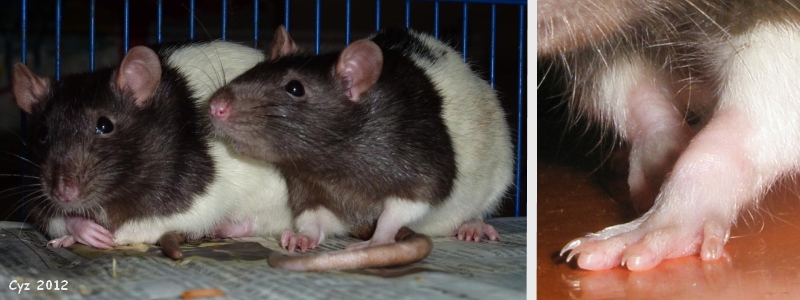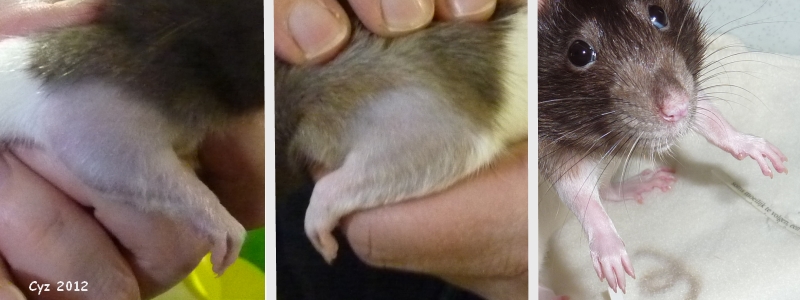Figure 4: Self-barbering in litter mates ( Madeleine and Victoria).
Case history and photos
History
Madeleine and Victoria are black hooded intact females – presumably sisters – who were found outside in a cardboard box in November 2010, at approximately 3 months of age. They were brought to a local rat rescue and went into foster care. Their foster home eventually adopted them.
Initially, the sisters did not appear used to handling. They were socialized while in foster care and became very friendly and used to handling, although they occasionally still react skittishly to sudden sounds and movements.
The sisters were housed with two castrated adult males for about 1.5 years (June 2012: both of the males have since passed away). The group got along very well with each other. Each female appeared drawn to (another) one of the males; the foursome often slept in two pairs. The alpha of the foursome was probably one of the males that Victoria was more closely bonded too. The current alpha is Madeleine.
The rats are housed in a large bird cage: floor surface 60x70cm and height 150cm. In addition, for several hours a day, they have free access to the fully enriched living room annex kitchen.
Clinical Signs
In January 2011 their keeper noticed that the back of Victoria’s hands and wrists were without fur. The skin was smooth and undamaged.
Madeleine’s hands and arms were initially furred. However, it was noticed that by April 2011, at approximately 8 months old both her arms had become scarcely furred, from the back of her hands until over her elbows. The skin was not damaged.
Obsessive grooming (of themselves) is observed in both girls.
Diagnosis
Self-barbering
Treatment
There is no specific treatment against barbering.
The sisters do not lack company, space, houses or toys. The move from their previous home into foster care will definitely have led to some stress, but it – as well as the uneventful introduction to the two males – took place several months prior to (the large increase in) Madeleine’s barbering.
The sisters’ keeper does suggest that, due to their high activity level and intelligence, the girls possibly require even more free-range time than they are already given, as well as a more challenging environment.
Outcome
The extent to which Victoria barbers her hands/wrists has remained fairly constant.
The extent to which Madeleine barbers initially increased: in the autumn of 2011 the absence of fur extended onto her chest (but not far). However, from the winter of 2011, the fur slowly returned to her chest and arms. In June 2012 only her wrists remain without fur. The cause for the increase and subsequent decrease in barbering is unclear.
Photos
 Photo on left shows Victoria (left) and Madeleine in January 2011. Photo on right shows close-up of fairly consistent extent to which Victoria barbers both of her hands and wrists. |
 Photos left and center taken in April 2011: show Madeleine’s scarcely furred right and left forelimb. Photo on right taken in June 2012: shows current (decreased) extent to which Madeleine barbers her hands and wrist areas. |
Rats and information courtesy of Marjolijn
Case history and photos courtesy of Cyzahhe


